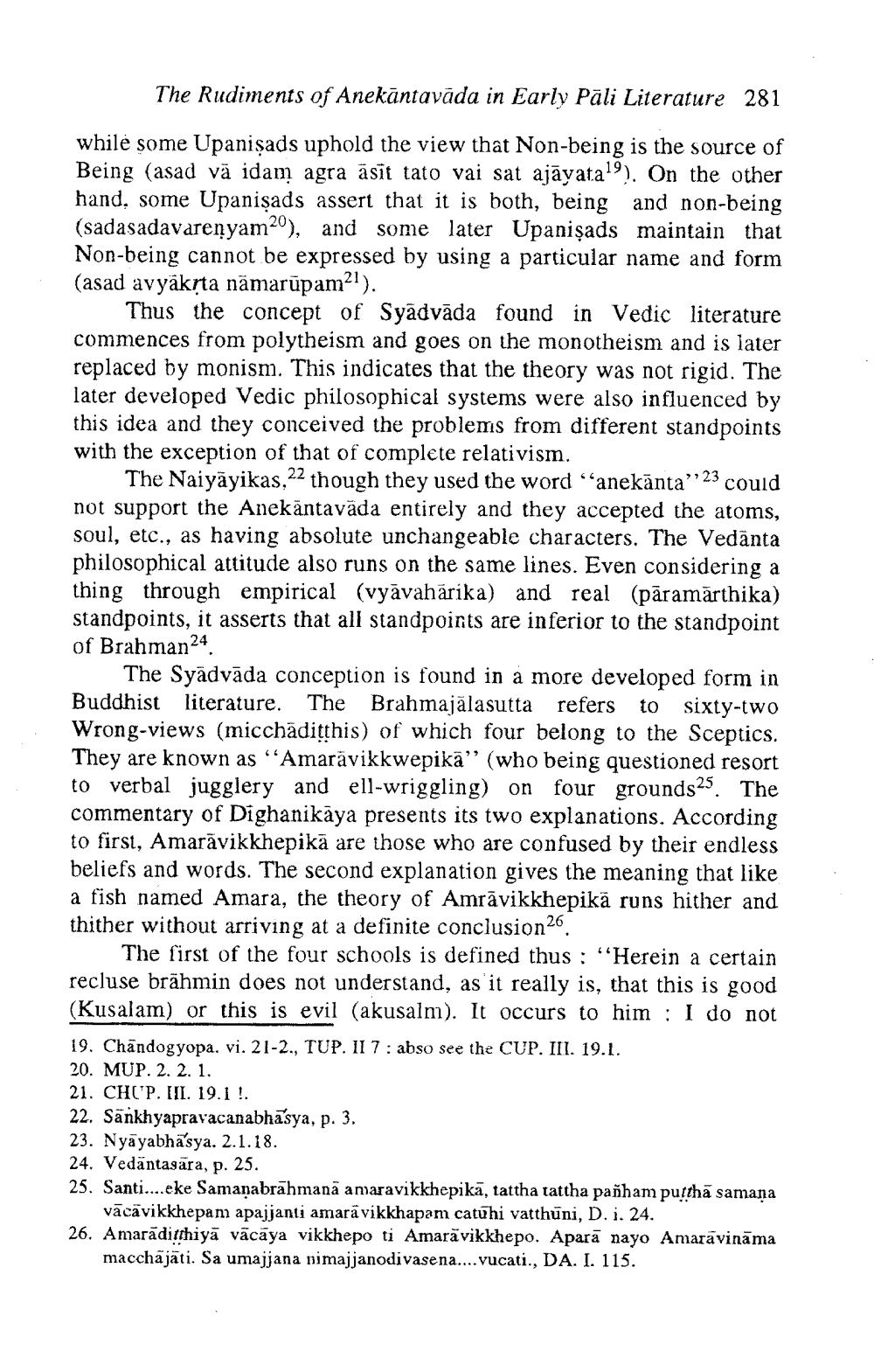________________
The Rudiments of Anekāntavāda in Early Pāli Literature 281
while some Upanişads uphold the view that Non-being is the source of Being (asad vā idam agra āsīt tato vai sat ajāyata!'). On the other hand, some Upanişads assert that it is both, being and non-being (sadasadavarenyam20), and some later Upanişads maintain that Non-being cannot be expressed by using a particular name ar (asad avyakrta nämarūp
Thus the concept of Syādvāda found in Vedic literature commences from polytheism and goes on the monotheism and is later replaced by monism. This indicates that the theory was not rigid. The later developed Vedic philosophical systems were also influenced by this idea and they conceived the problems from different si with the exception of that of complete relativism.
The Naiyāyikas,22 though they used the word “anekānta”:23 could not support the Anekantavada entirely and they accepted the atoms,
oul, etc., as having absolute unchangeable characters. The Vedanta philosophical attitude also runs on the same lines. Even considering a thing through empirical (vyāvahārika) and real (pāramārthika) standpoints, it asserts that all standpoints are inferior to the standpoint of Brahman24
The Syädvāda conception is found in a more developed form in Buddhist literature. The Brahmajälasutta refers to sixty-two Wrong-views (micchäditthis) of which four belong to the Sceptics. They are known as “Amarāvikkwepikā” (who being questioned resort to verbal jugglery and ell-wriggling) on four grounds25. The commentary of Dighanikāya presents its two explanations. According to first, Amarāvikkhepikā are those who are confused by their endless beliefs and words. The second explanation gives the meaning that like a fish named Amara, the theory of Amrāvikkhepikā runs hither and thither without arriving at a definite conclusion26.
The first of the four schools is defined thus: “Herein a certain recluse brāhmin does not understand, as it really is, that this is good (Kusalam) or this is evil (akusalm). It occurs to him : I do not 19. Chāndogyopa. vi. 21-2., TUP. II 7: abso see the CUP. III. 19.1. 20. MUP. 2. 2. 1. 21. CHC'P. III. 19.1 !. 22. Sankhyapravacanabha'sya, p. 3. 23. Nyāyabha'sya. 2.1.18. 24. Vedäntasara, p. 25. 25. Santi....eke Samanabrahmana amaravikkhepikā, tattha tattha paham putthā samana
vācāvikkhepam apajjanti amarāvikkhapam catuhi vatthūni, D. i. 24. 26. Amarāditthiyā vācāya vikkhepo ti Amarăvikkhepo. Aparā nayo Amarāvināma
macchajati. Sa umajjana nimajjanodivasena....vucati., DA. I. 115.




